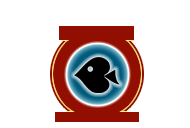every street looks good/standard.
he has 12%pfr over 55 hands, most likely it will end up being slightly higher over a bigger sample, but we can stick with 12% for now as a conservative estimate to decide whether we have the best hand on river, and what action we should take.
so give him a range of something like: AA/KK/QQ, AK, AQ, KQ, JTs, Axcc, QJdd, maybe T9cc, and maybe an occasional non-believing KJs.
then you want to take into account that some of these hands are less likely to slowplay to the river. because he has position, it's feasible that he would slowplay a lot of strong hands. but on the flop, for example, i would probably still discount one of the oversets (we'll use QQ). on the turn, maybe discount half of his JTs combos. not that he couldn't be flatting JT on the turn, but people tend to start shoveling the money in when they have the nuts on a wet board with deepish stacks.
so on the river give him like AA/KK, AK, AQ, KQ, JTs(half), QJdd, T9cc, most nut flushes, and maybe 1 combo of KJs. i don't have pokerstove on my comp atm but you should have the best hand well over half of the time (but you should check to verify). you can also see from this range that he's unlikely to have anything he's turning into a bluff, aside from QJdd and KJs, if he gets there with it. this means that betting the river is superior to check-calling. your betsizing is good, because you want to target the weaker part of his range - betting more might get folds from hands like KQ.
the ranges i used are also probably on the conservative (tight) side, and some of the assumptions might be debatable, but the point is more about the logic you should use for arriving at a decision. |

 Contact Users: 232 Active, 2 Logged in - Time: 17:50
Contact Users: 232 Active, 2 Logged in - Time: 17:50